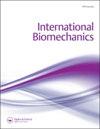Kinematic differences between hitting off a tee versus front toss in collegiate softball players
Q2 Medicine
引用次数: 5
Abstract
Abstract The purpose of this study was to compare kinematics of two hitting conditions: stationary tee and front toss from a practice pitcher. Twenty-two NCAA Division I Collegiate softball players (20.3 ± 1.5 years; 166.6 ± 6.3 cm; 68.0 ± 7.5 kg) participated. Participants executed five maximum effort swings from a stationary tee and five swings from a front toss practice pitcher. Data for each kinematic variable were averaged for the five maximal effort swings of each condition and analyzed using a within-subject repeated measures ANOVA. The front toss condition revealed significantly greater lead knee flexion at foot contact and greater trunk rotation towards the back side at ball contact. The tee condition revealed greater trunk lateral flexion to the back side at foot contact, greater trunk rotation towards the lead side at follow through, and greater pelvis rotation towards the lead side at follow through. This study most significantly indicates that swing mechanics are different between specific training methods; therefore, athletes should implement techniques most applicable to a competition setting such as the front toss.大学垒球运动员开球与前抛球之间的运动学差异
摘要:本研究的目的是比较两种击球条件:静止发球和前抛从练习投手的运动学。22名NCAA甲级大学垒球运动员(20.3±1.5岁;166.6±6.3 cm;68.0±7.5 kg)参加。参与者在静止的球座上进行了五次最大努力挥杆,在投球练习投手上进行了五次挥杆。每个运动学变量的数据被平均为每个条件下的五个最大努力摆动,并使用受试者重复测量方差分析。前倾情况显示,在足部接触时膝关节弯曲明显增加,在球接触时躯干向后侧旋转明显增加。三通条件显示,在足部接触时躯干向后侧侧屈较大,在跟进时躯干向前侧旋转较大,在跟进时骨盆向前侧旋转较大。该研究最显著地表明,不同训练方法的挥拍力学存在差异;因此,运动员应该运用最适用于比赛环境的技术,比如前抛。
本文章由计算机程序翻译,如有差异,请以英文原文为准。
求助全文
约1分钟内获得全文
求助全文
来源期刊

International Biomechanics
Medicine-Rehabilitation
CiteScore
1.90
自引率
0.00%
发文量
2
审稿时长
17 weeks
期刊介绍:
International Biomechanics is a fully Open Access biomechanics journal that aims to foster innovation, debate and collaboration across the full spectrum of biomechanics. We publish original articles, reviews, and short communications in all areas of biomechanics and welcome papers that explore: Bio-fluid mechanics, Continuum Biomechanics, Biotribology, Cellular Biomechanics, Mechanobiology, Mechano-transduction, Tissue Mechanics, Comparative Biomechanics and Functional Anatomy, Allometry, Animal locomotion in biomechanics, Gait analysis in biomechanics, Musculoskeletal and Orthopaedic Biomechanics, Cardiovascular Biomechanics, Plant Biomechanics, Injury Biomechanics, Impact Biomechanics, Sport and Exercise Biomechanics, Kinesiology, Rehabilitation in biomechanics, Quantitative Ergonomics, Human Factors engineering, Occupational Biomechanics, Developmental Biomechanics.
 求助内容:
求助内容: 应助结果提醒方式:
应助结果提醒方式:


